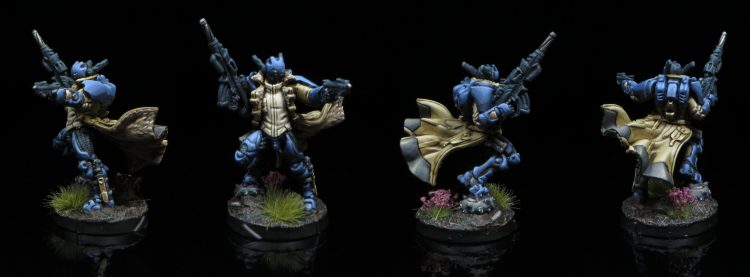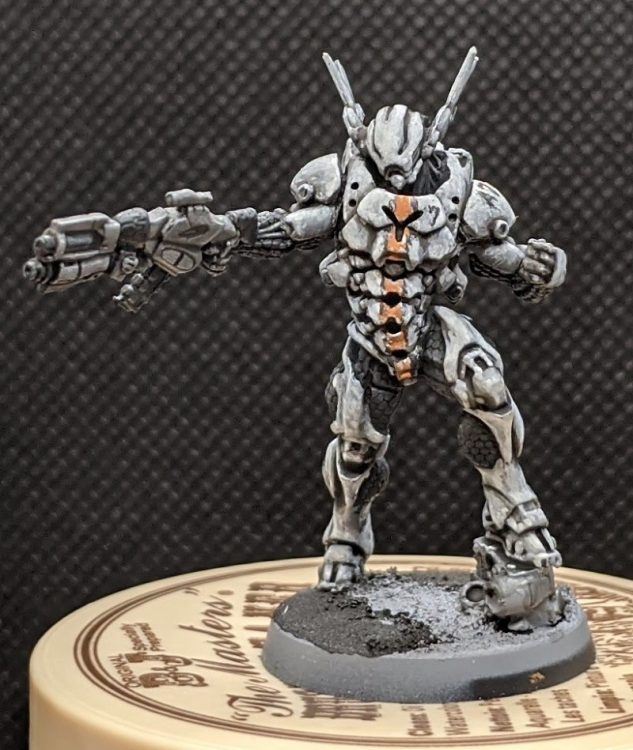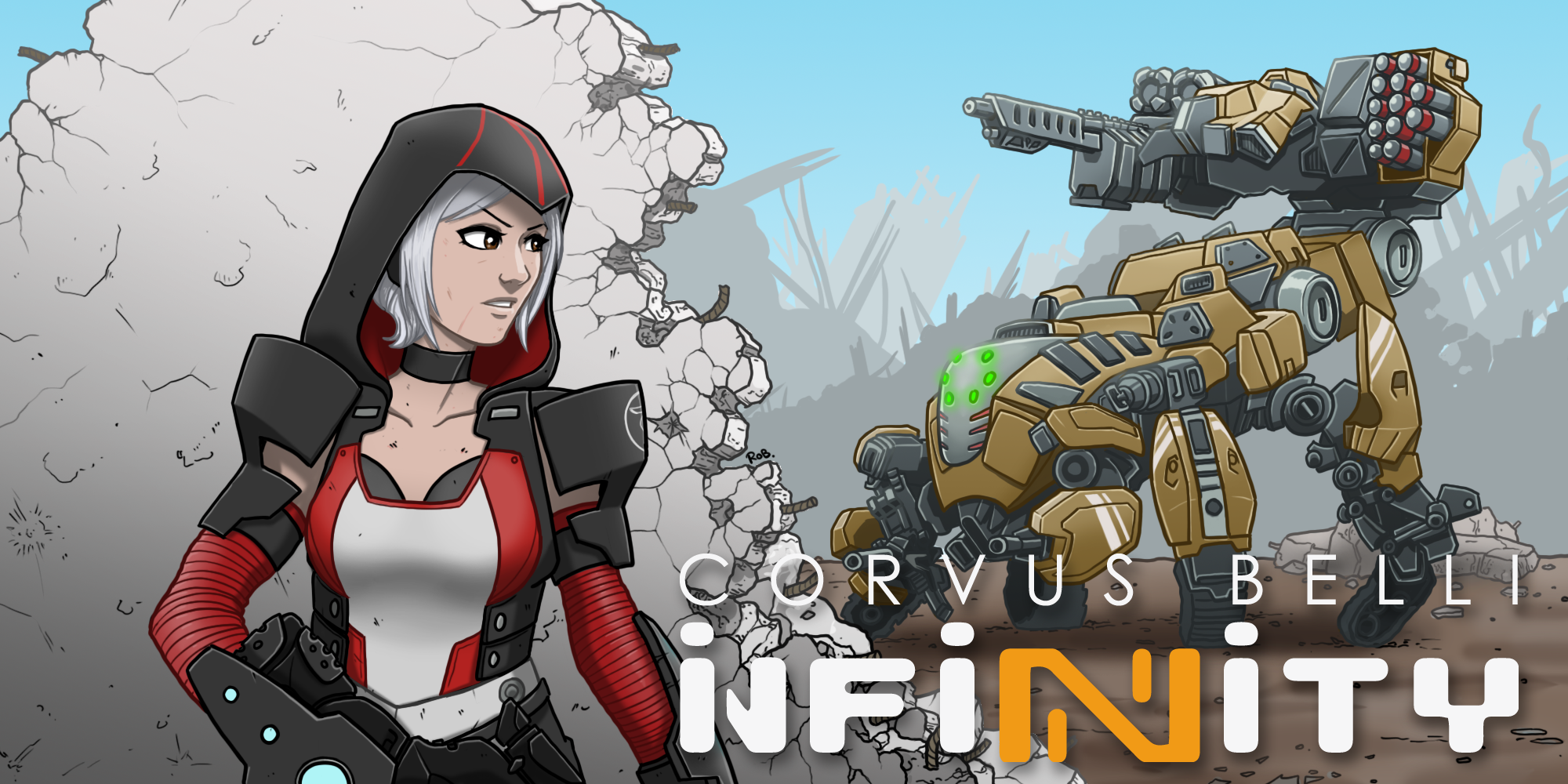One of the most subtly complex topics in N4 Infinity is what, exactly, to do with Combat Group Two (CG2). Gone are the days when you could cram so many models into it that it could fight almost like Combat Group One (CG1), nowadays the five-model limit means that it’s stuck forever in some sort of support capacity. The upside is that, with the removal of the Limited Insertion special rule, there is no longer a weird uncanny valley in the 11-13 model range where it’s actively detrimental. When I’m building lists these days, CG2 bends my brain more than anything else and I’ve seen amazing innovations in this space over the past couple of months of N4.
Listbuilding is so idiosyncratic that some lists will be able to perform several of these functions at once – and that’s great when you can do it. More likely, though, you’ll be in a place where you can only reasonably accomplish one of these goals with combat group two.

Strategos Two
Strategos Two is a hugely impactful rule, far more than it might seem at first glance. Every turn you can flip a model from one combat group into the other – this has a huge impact on how you design your combat groups. You can consistently top up your main combat group by sliding spare models from CG2 in to replace losses, you can do things like put a TAG, a flashbot and three irregular models into a group and have it be fine, you can bring in an airborne deployment model with ten orders behind it if the opportunity arises. The flexibility this gives you is immense and turns a lot of listbuilding maxims on their head.
The Medic/Engineer Support
The traditional, and in my opinion, the weakest thing you can do with a second combat group is have it centred around a medic or an engineer. When this works it can fuel a scoring play or the recovery of a critical asset and that can be decisive – but when it doesn’t work you’ve got five orders and nothing to spend them on.
The best manifestation of this approach is when it includes an engineer and a total reaction HMG remote. A TR remote is only BS11, but it’s still a HMG, and you can fire it fairly fearlessly at a powerful enemy overwatch piece on the understanding that you’ll just repair it immediately with the engineer if it loses the fight. Unconscious remotes are far more likely to stick around than unconscious organic pieces, and hacking effects can be wiped by the engineer, making the engineer generally far more likely to have things to do than the doctor.
The Artillery Package
Sometimes you want your TAG in Combat Group Two. It seems counterintuitive to put your centrepiece model in a position where it only has 6 orders to spend, but for a lot of TAGs that’s enough to accomplish their function. A TAG will likely spend its first turn moving around and suppressing enemy big gun overwatch pieces; it will not generally charge deep because it’s bad at that kind of thing. This kind of movement is easily accomplishable with six orders, and if the enemy deploys with a null defense the TAG can instead move into midfield, score an objective, and enter suppressive fire. In later turns you might see about moving it into combat group one if there’s more it can accomplish that way.

The Minelayers
If you only had one order in a group, probably the best thing you could get done with it is using the Deploy Mine skill. If your faction has cheap skirmishers then putting them in combat group two where their mission is to score objectives and clutter the midfield with mines is an extremely effective way to utilize them. If you’ve got enough of them you can even make it your plan to use a coordinated order to move and deploy mine, potentially letting you turn the entire midfield into an explosive hellscape – and then you can use another co-ordinated order to re-enter camouflage.
The real prize money, though, is having a Pitcher or Drop Bears – ideally combined with a Baggage Remote. This lets you really efficiently stand in place and toss clutter all over the midfield and spend the odd order to reload. Even if your enemy just matches you order for order shooting down your clutter you’re likely trading your combat group 2 orders for their combat group 1 orders, which is always an excellent result.
The Irregular Team
This approach is about just stuffing CG2 full of irregular orders who you fully expect to die slowing the enemy down. Be this four Dalyami or a single WarCor, this sections all your irregular troops off where they won’t interfere with your actual get-stuff-done arm and ensures you don’t feel the need to get things done with a group fundamentally incapable of it. If you can, put a cheap biker or irregular infiltrator/airborne deployment troop into this combat group – sometimes you’ll be able to spend a bunch of command tokens to have it get a startling amount done in a very small order pool.
The Bench
It’s a valid play to build CG2 full of cheap regular orders who are to be cycled into CG1 when losses are taken. If CG1 has both a Core Link and a Haris Team then there’s minimal flexibility remaining in the group so some models might just spill over naturally into CG2. Having a turn two or three sweeper waiting in CG2 for an opportunity to go on a run is valid if you budget a command token for it.

The Disposable Attack Piece
Having something that can be in the enemy’s face instantly, inflict damage, and then die is a great use for CG2. A warband, a drop trooper, a biker, an infiltrating flamethrower grunt, anything that can cross the table quickly and die firing a template weapon directly into a cluster of enemy models excels in this position. However, most attacks are very order intensive, and it’s awful to have to call one as over before it’s done any damage. To get the most out of a CG2 attack piece you want to pair it with some element in combat group one – a Bashi Bazouk who’ll use her holoprojectors to detonate mines and then trade her life with an enemy defense piece to clear the way for your real assault, for example.
A turn two variation of this is to have a drop trooper with a mid-range gun like a spitfire with the intention of parachuting onto a table edge and then shooting exposed enemy midfield pieces in the rear. Even having one piece in the enemy’s rear arc is agonizing because if they’re able to turn to face you that means they’ll likely have at least part of their rear showing to your deployment zone, letting you shoot them unopposed from the other direction as well.
The Scoring Piece
Ideally, this is a ninja killer hacker who starts the game sitting a breath away from an objective and on the final turn appears to seize it. It can also be a specialist drop trooper who’s there to make an all-or-nothing combat jump roll or a specialist biker who is there to do a mail run around all the objectives. Even if it’s just a girl on foot running between objectives this is likely the best use of combat group two in general and any CG2 should go out of its way to include at least one specialist.
An EVO Hacker bears particular mention here. It’ll spend one order putting up its buff, making it unsuitable for CG1 duty, but after that it can just spend its time performing objectives when required. An Engineer, an EVO Hacker, a TR HMG and two other models of choice represent a really great combat group 2 module, capable of providing powerful artillery support with an effectively BS14 HMG, sustaining that remote with repairs, and performing objectives in the later stages of the game.
Have any questions or feedback? Drop us a note in the comments below or email us at contact@goonhammer.com.


